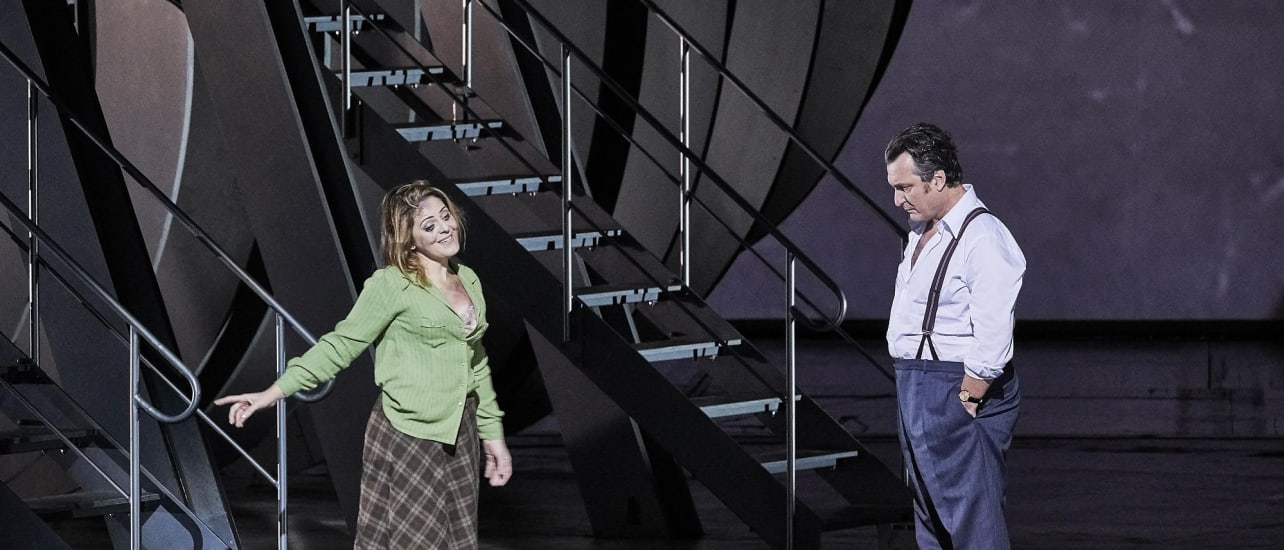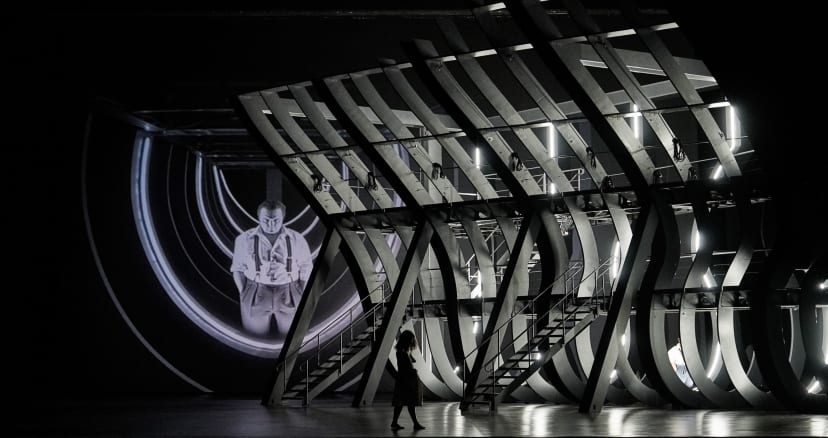Synopsis
Listen to the synopsis
Although not the best-known of Verdi's operas, Simon Boccanegra was one of his favourites, to the extent that he extensively reworked it 24 years after its Venice premiere in 1857.
What a destiny Simon Boccanegra enjoyed! This former privateer, elected doge of Genoa, wishes to re-establish peace within his Council, divided between patricians and plebeians, and peace with Venice, the eternal rival. But this humanist is also consumed by the loss of his daughter, kidnapped as a child.
In this intimate political drama, the composer no doubt found echoes of his own life, having contributed to Italian unification and lost his first two children.
Musically speaking, Verdi created a character of great psychological depth. A complexity emphasised in Calixto Bieito's production, which plunges us into Simon's thoughts, not forgetting an evocation of the sea - the only place where the seaman was truly happy – in the form of the hull of a huge ship.
Duration : 3h00 with 1 interval
Language : Italian
Surtitle : French / English
Artists
Opera in three acts (1857)
After Antonio Garcia Guttiérrez
Creative team
Cast
Paris Opera Orchestra and Chorus
A coproduction with the Deutsche Oper, Berlin
Media


Watch online the recording from season 18/19 on Paris Opera Play, with Ludovic Tézier, Maria Agresta, Mika Kares, Francesco Demuro...
Access and services
Opéra Bastille
Place de la Bastille
75012 Paris
Public transport
Underground Bastille (lignes 1, 5 et 8), Gare de Lyon (RER)
Bus 29, 69, 76, 86, 87, 91, N01, N02, N11, N16
Calculate my routeCar park
Parking Indigo Opéra Bastille 1 avenue Daumesnil 75012 Paris
Book your spot at a reduced price-
Cloakrooms
Free cloakrooms are at your disposal. The comprehensive list of prohibited items is available here.
-
Bars
Reservation of drinks and light refreshments for the intervals is possible online up to 24 hours prior to your visit, or at the bars before each performance.
-
Parking
You can park your car at the Indigo Opéra Bastille. It is located at 1 avenue Daumesnil, 75012 Paris.
In both our venues, discounted tickets are sold at the box offices from 30 minutes before the show:
- €35 tickets for under-28s, unemployed people (with documentary proof less than 3 months old) and senior citizens over 65 with non-taxable income (proof of tax exemption for the current year required)
- €70 tickets for senior citizens over 65
Get samples of the operas and ballets at the Paris Opera gift shops: programmes, books, recordings, and also stationery, jewellery, shirts, homeware and honey from Paris Opera.
Opéra Bastille
- Open 1h before performances and until performances end
- Get in from within the theatre’s public areas
- For more information: +33 1 40 01 17 82
Online
Opéra Bastille
Place de la Bastille
75012 Paris
Public transport
Underground Bastille (lignes 1, 5 et 8), Gare de Lyon (RER)
Bus 29, 69, 76, 86, 87, 91, N01, N02, N11, N16
Calculate my routeCar park
Parking Indigo Opéra Bastille 1 avenue Daumesnil 75012 Paris
Book your spot at a reduced price-
Cloakrooms
Free cloakrooms are at your disposal. The comprehensive list of prohibited items is available here.
-
Bars
Reservation of drinks and light refreshments for the intervals is possible online up to 24 hours prior to your visit, or at the bars before each performance.
-
Parking
You can park your car at the Indigo Opéra Bastille. It is located at 1 avenue Daumesnil, 75012 Paris.
In both our venues, discounted tickets are sold at the box offices from 30 minutes before the show:
- €35 tickets for under-28s, unemployed people (with documentary proof less than 3 months old) and senior citizens over 65 with non-taxable income (proof of tax exemption for the current year required)
- €70 tickets for senior citizens over 65
Get samples of the operas and ballets at the Paris Opera gift shops: programmes, books, recordings, and also stationery, jewellery, shirts, homeware and honey from Paris Opera.
Opéra Bastille
- Open 1h before performances and until performances end
- Get in from within the theatre’s public areas
- For more information: +33 1 40 01 17 82
Online

Discover opera and ballet in another way

Dive into the Opera world and get insights on opera and pop culture or ballet and cinema. Scan this code to access all the quiz and blindtests on your mobile.

3 min
Simon Boccanegra
The true/false story: Simon Boccanegra
Love, betrayal and reconciliation... We all know the recipe. But can you unravel the true story of Verdi's Simon Boccanegra? Over to you!
Discover



























































